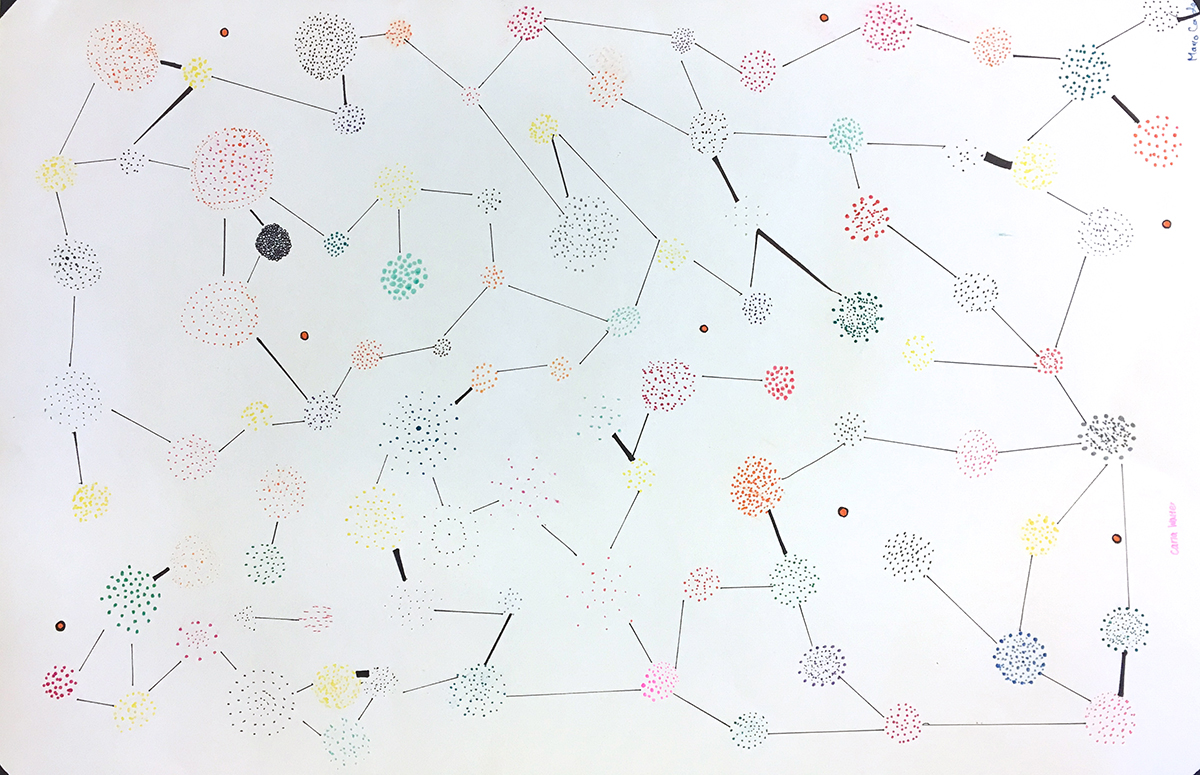Connections & Community
By Laura Boban and Gabriel Dominguez
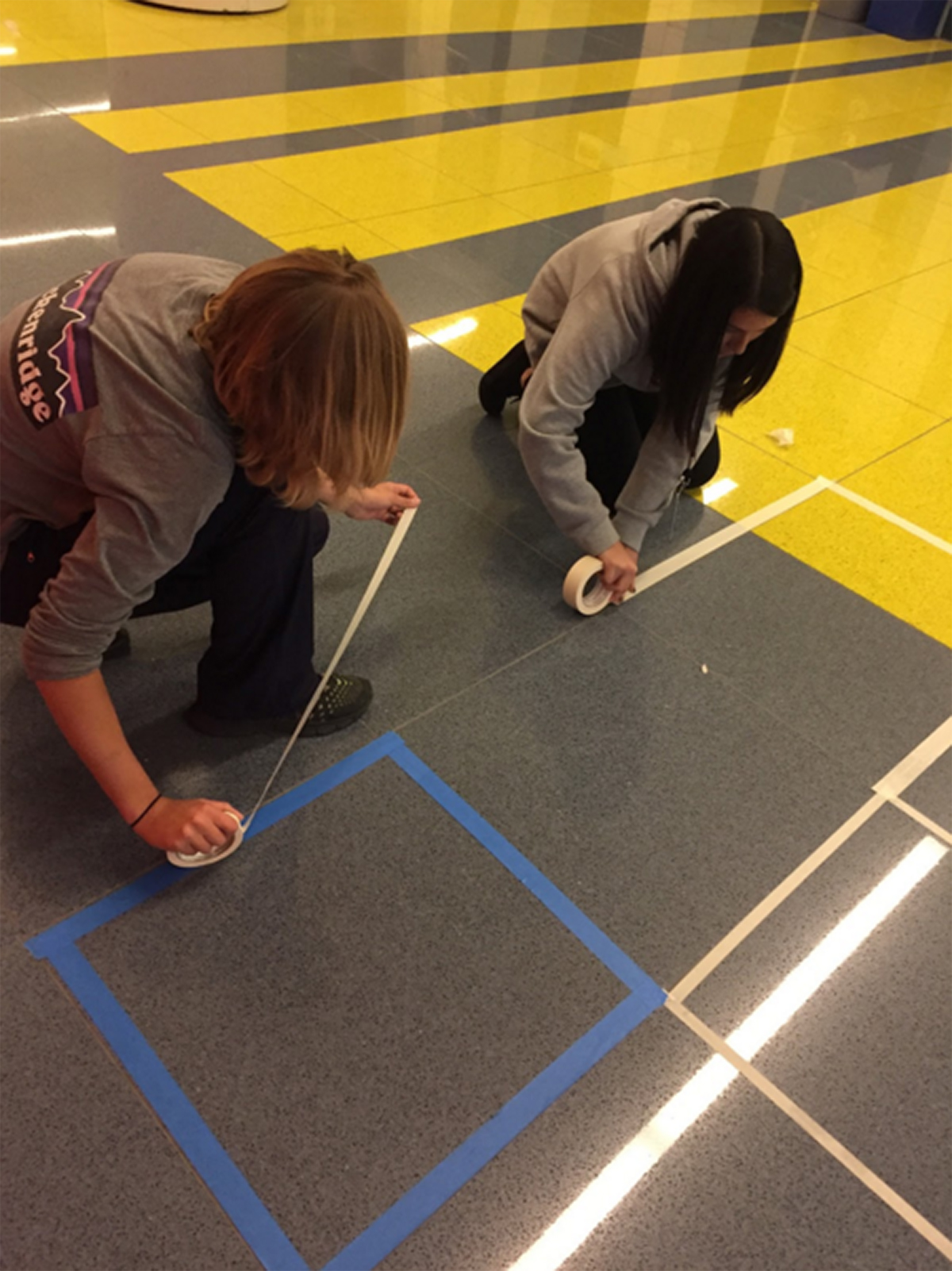
How do we effectively build community and empathy in school situations where students do not share the experience of living in the same neighborhood or location? While this makes for a more racially, ethnically, and economically diverse school, the reality is that selective enrollment schools do not accurately reflect Chicago Public Schools student populations across the city. Most of our students leave their own neighborhoods and commute to school from all different parts of the city. This fact, as well as an increasing population of affluent, white students enrolled at Jones and other selective enrollment schools, presents challenges for teachers and students to build an authentic and empathetic community. Our project derived from a need to help establish safe and affirming spaces and a welcoming community that provides students with a sense of value and opportunities to connect with others at Jones.

Goals and Objectives
- Students will investigate topics of spatial relationship and self in an academic setting.
- Students will be able to identify characteristics and challenges of their school community in order to identify an issue.
- Students will create opportunities for their school community to participate in a variety of socially engaged art events.
Guiding Questions
- How can culturally diverse students come together and create community?
- What events can foster social, intellectual, and emotional connections between people who share a space?
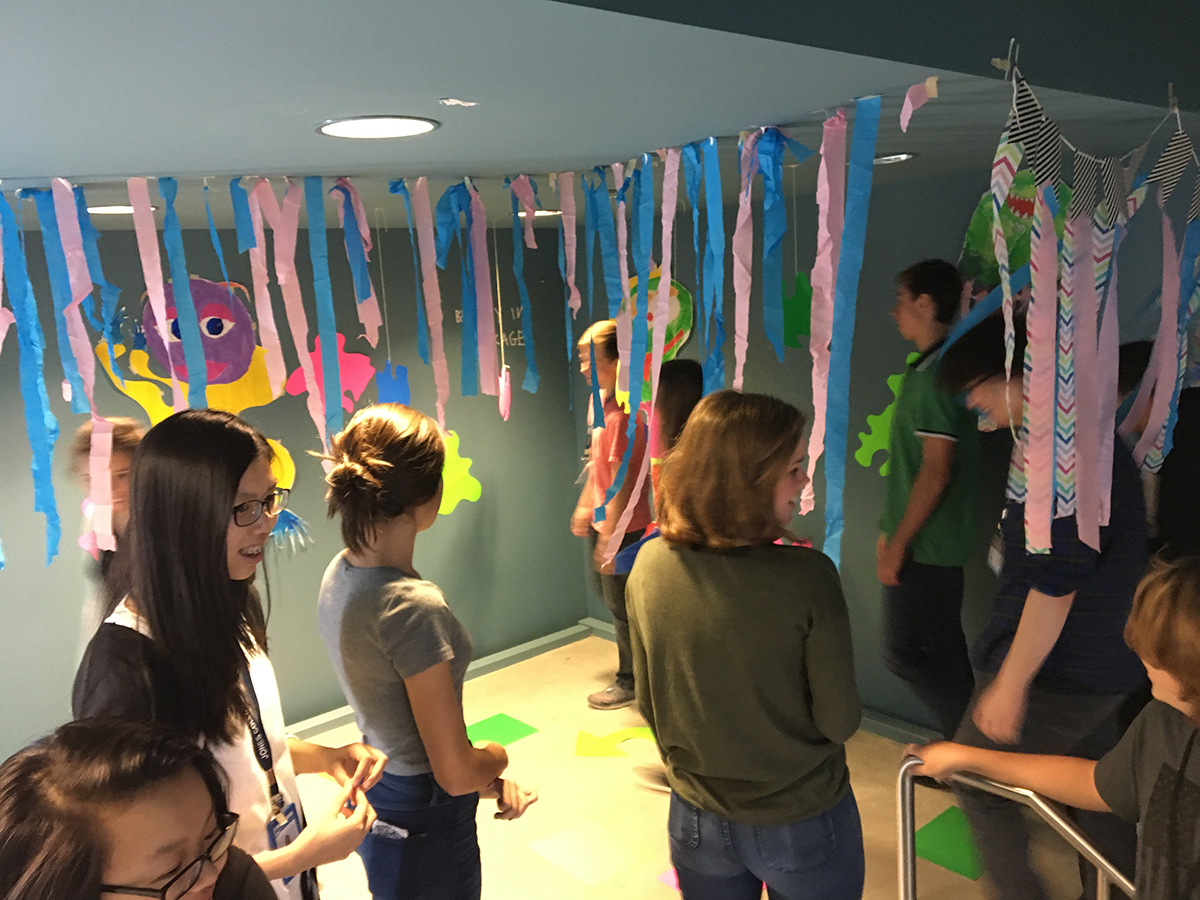
Documentation + Assessment
Quality of Concept and Actual Event
- Students successfully developed and communicated an idea that supported community building.
- Project concept and event embodied characteristics of socially engaged art.
- Project concept and event components were thoughtfully developed, inventive, and complex.
Visual Qualities and Construction
- Students made intentional artistic and aesthetic choices that supported their event and concept.
- Visual components such as designs and artistic gestures were well crafted and securely constructed and displayed.
Promotion and Attendance
- Students utilized a variety of methods to promote their event to the school community.
- Students reached out to different people in Jones community beyond their peers for further participation.
- Students were able to encourage at least 30 people (who were not from their Art 1 class) to participate in their event.
Enthusiasm, Work Ethic, and Effort
- Students worked well and communicated with their group members in all aspects of the project.
- Students challenged themselves to accomplish creative tasks they could not do prior to this lesson.
- Students were invested in the success of the completed project event and utilized every minute of class to complete something that they can be proud of.
Presentation and Documentation of Event
- Students provided quality images/videos as documentation for each stage of the project.
- Students fulfilled all requirements of presentation, including image quality and number of images and slides.
- Students were organized and engaging as they communicated and presented the story of their event.
Learning Activities
About 4 months, 2–3 weeks, 3–4.5 hours a week
- Engaged in critical dialogue defining what art can be, the forms it can take on in 4 dimensions, socially engaged art.
- Instead of determining one unifying issue, students were grouped by the teachers and invited to choose an issue within their group, and were responsible for research and implementation.
- Went on the MCA field trip, further honing both their skills in critical dialogue and exploring the role of artists in the community, for example, thinking about Kerry James Marshall’s idea of “amplifying the overlooked.”
- Students worked individually on collages exploring themes that they identified as important from the exhibition.
- After discussions about critical space sharing, how to convey self in space in a given context, and defining the existing logic, students worked in small groups to create an “illogical” installation in a high-traffic school space.
- Students reflected on the bad reception of their work. It was poorly received for a number of reasons.
- Over 2 weeks, 20 small groups designed events to take place in Academic Lab, a self-directed time available to all grade levels.
- Over the next 2 weeks, the 20 small groups promoted and implemented the following events:
Make it Stick: Students participated in a friendly competition through an interactive installation.
Camp Jones: Brought the community together in an activity that most are familiar with, camping.
Speed Socializing: Encouraged complete strangers to interact when given a chance to speak to one another for a good amount of time (about 2-3 minutes) as a means to form new friendships and meet new people.
Please Take One: Gave students added motivation throughout the day as well as encouraging them to give such encouraging comments to other students.
Community Wish: Have everyone’s voices represented in a single space so that everyone feels a sense of inclusion at Jones.
Jones Trivia Board: Have the Jones College Prep students come together in unison to participate in a knowledge-based activity.
Go to the Polls: Collected information from the students on topics of interest, which will offer the school a collective voice with new perspectives.
Look in Mirror: Offered the student population an opportunity to consider a new sense of self and create self identity while walking away with a sense of self knowledge and worth.
Who is it?: Publicly displayed interviews where different faculty members and students from the Jones Community shared a story of kindness that impacted their life, and invited students to guess which story correlated with which person.
Bubble Wrap Attack: Provided an opportunity to relieve stress, have fun, and engage with new people of the Jones community.
Origami Dinner Party: Students gathered around a long table to socialize with other students while learning and making origami together.
Uno Tournament: Fun card game tournament played in the hall at tables and on the floor.
How Are You Feeling?: Interactive hallway installation of giant painted emoji faces for students to consider their mood that day.
Community Yoga: Student-led, stress-relieving beginner’s yoga in dance room.
Flower Power: Students handed out tissue paper flowers with positive compliments attached to the stems.
Tell Me Something I Don’t Know: Anonymously shared secrets collected and publicly installed in the hallway.
Uncovering the Hidden: Video screening and discussion of students sharing experiences of discrimination, both in and out of school.
Board Game Extravaganza: Sitting on blankets in the hallway, students played board games together with friends and strangers.
Positivity Tag: Friendly activity of tagging students with post-its containing positive and encouraging messages.
Ambition: Video compilation of Jones teachers and students defining and sharing ideas about personal ambition.
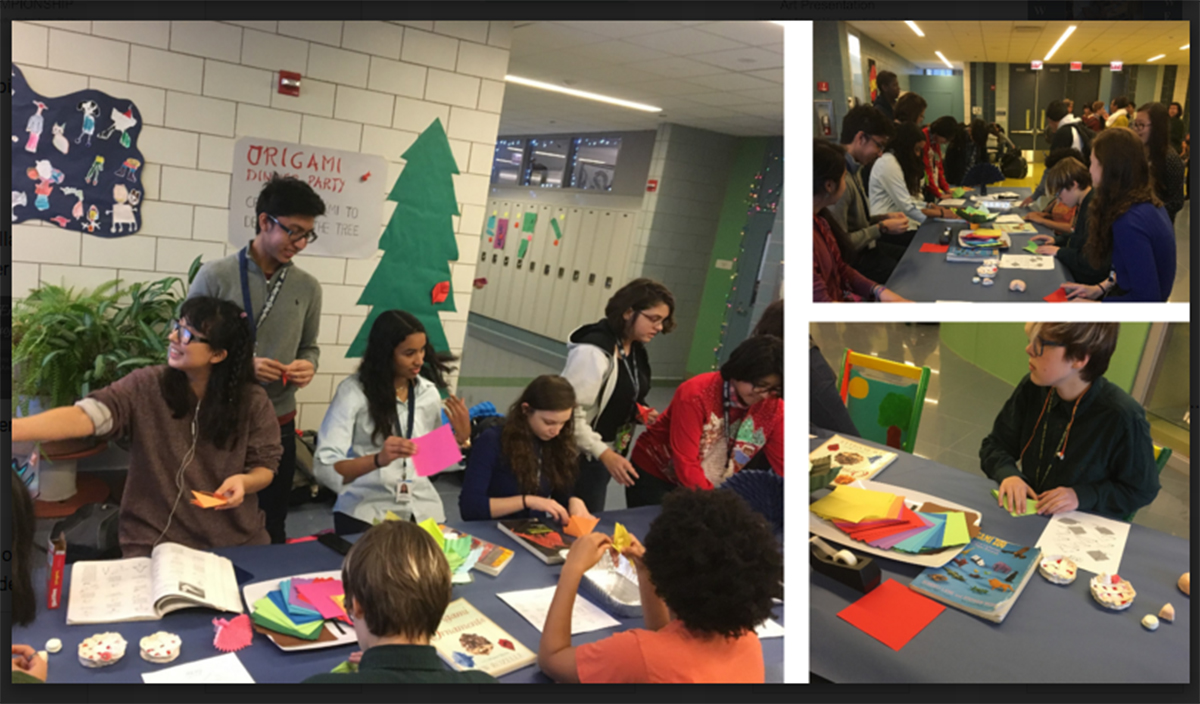
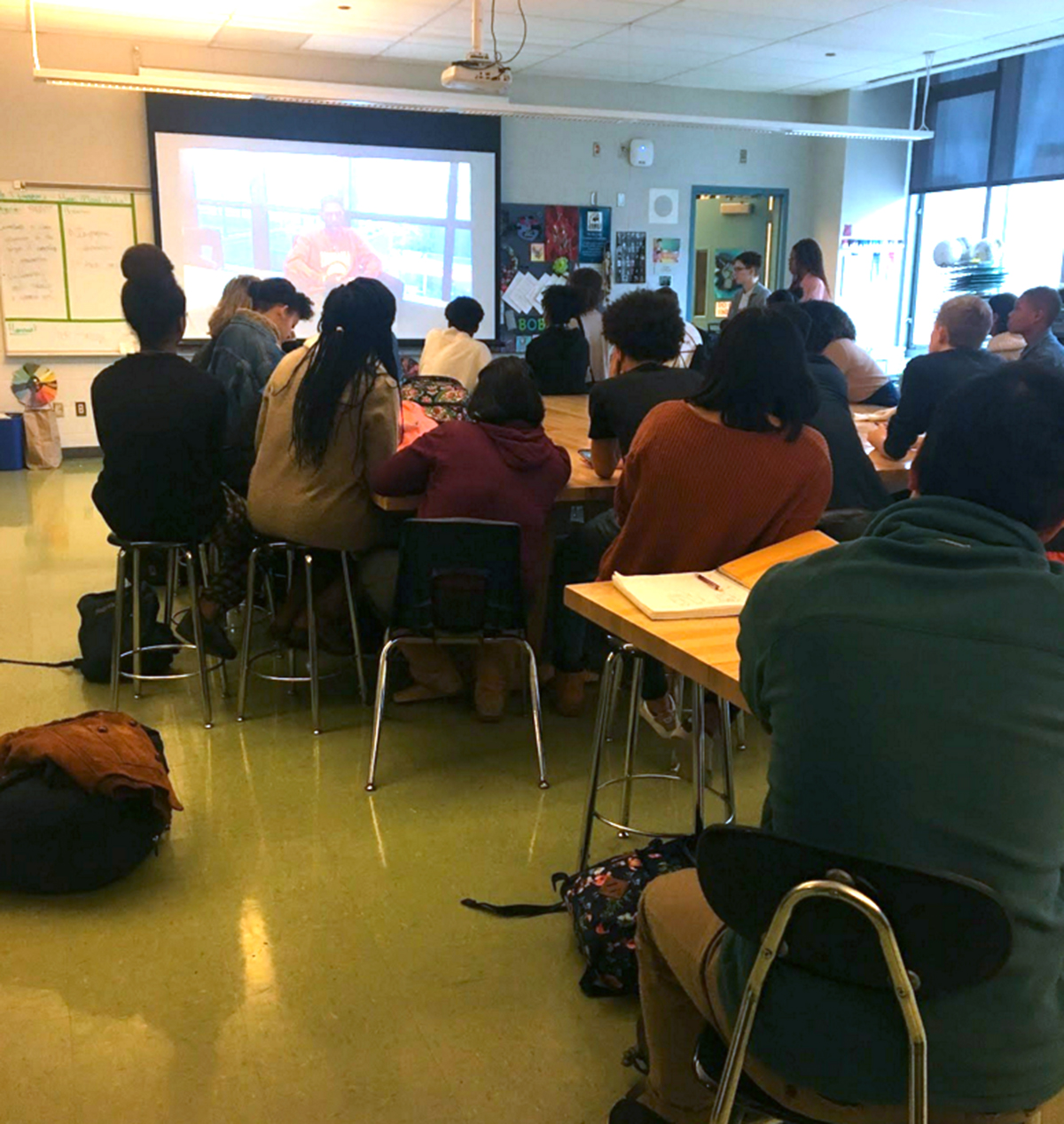
Materials
- Large banner/rolls of paper, various colors
- Poster board
- Paint
- Brushes
- Markers
- Construction paper
- Tape (and various adhesives)
- Yarn
- Post-its
References + Resources
Laura Boban and Gabriel Dominguez
William Jones College Preparatory High School
Laura Boban teaches visual arts at Jones College Prep in Chicago Public Schools. Her art curriculum aims to support students in becoming effective visual communicators, question the status quo, and encounter and appreciate differences. Through fibers and painting, she explores the intersections between gender, queerness, decoration, and labor in her work.
Gabriel Dominguez is a Chicago Public Schools Visual Arts Teacher at Jones College Prep. His art curriculum derives from a social justice lens aimed to seek, promote, and invest in personal identity. He sees his classroom as an opportunity to create a venue for individual voices with different perspectives to work together as a collective.
Laura and Gabriel reflect on their process:
As educators, we realized that our own unrealistic expectations and assumptions regarding this project were imposed on students as they were finding their voice in their work. There was a lot of momentum and energy at the beginning, but toward the end it felt like we were pushing socially engaged art on our students. We approached this whole process too academically, thinking this was best for our students, when they were actually craving individual studio projects.
By the middle of the 4 months, student engagement declined, and motivating the students and motivating ourselves became extremely challenging; it was hard to bounce back from our disappointment. Upon reflection, we realized that our students made some compelling work that fostered authentic interactions and connections. And although this project may not have completely changed the school culture, or resolved all the issues we as educators wanted to address, it allowed our students to transform areas of Jones into places that were inviting, inclusive, and personal. These aspects of socially engaged art provided us with ideas and actions that we continue to investigate and perform inside and outside our classrooms, within our school walls.
